Tangy mint smell. Velvety flowers. Giant sandpapery leaves. Visit a garden with ALL of your senses, and you experience the plant world in a totally different way – which is exactly what Bryon Jones wants you to do.
On Sunday, Nov. 5 at 10am, the horticulturalist at Point Defiance Zoo & Aquarium will lead his monthly garden tour with a difference: a brand-new sensory tour that focuses on touch and smell as much as sight.
“Some of these plants have the most amazing scents or textures that you’d never guess by just looking,” says Jones, who has populated the Tacoma zoo with a landscape of lush, striking plants that often mimic the natural habitats of the animals nearby. “That’s what this tour is all about. I’ll be encouraging guests to rub leaves and sniff, to run their hands along the plants, to just explore.”
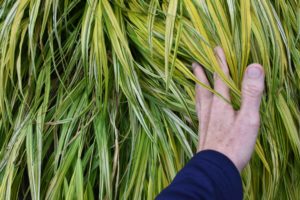 Sensory gardens are becoming more popular as people realize the benefits to people of all ages and sensory abilities. It helps those with limited sight appreciate nature to the fullest, and offers us all the chance to learn how people with different abilities experience the world.
Sensory gardens are becoming more popular as people realize the benefits to people of all ages and sensory abilities. It helps those with limited sight appreciate nature to the fullest, and offers us all the chance to learn how people with different abilities experience the world.
It can also help those with sensory processing needs, an important goal for the Point Defiance Zoo, which was recently certified sensory-inclusive by nonprofit Kulture City.
“Providing a sensory garden experience allows people with sensory processing needs the opportunity to stimulate their senses at their own pace through a controlled environment,” explains Mallory Pritchard, a therapist with Kulture City. “Plants offer a variety of colors, smells, textures and even sounds for individuals to explore. This can lead to increased sensory regulation and provide new and engaging sensory experiences.”
Here’s just some of what’s on the August 4 tour, although guests can definitely explore the gardens on their own as well.
TOUCH
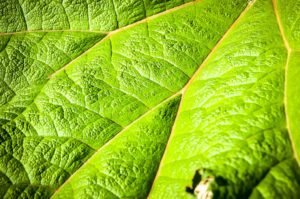
Giant Chilean rhubarb (Gunnera chilensis)
ROUGH: This massive perennial is a staple of Northwest jungle gardens, with leaves growing several feet in diameter. The leaves’ tiny prickles are not enough to hurt, but give a rough, sandpapery feel.
FIND IT: Around the Asian Forest Sanctuary.
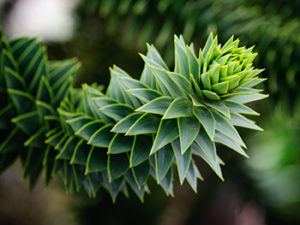
Monkey puzzle tree (Araucaria araucana)
SPIKY: This South American native grows long, tentacle-like branches bristling like a dinosaur with sharp, spiky leaves.
FIND IT: Just above Penguin Point and another as you turn left for Kids’ Zone.
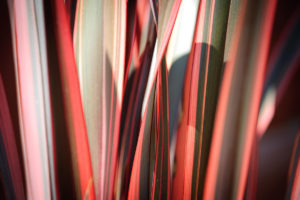
New Zealand flax (Phormium tenax)
HARD: Used by generations of Maoris for building, crafts and even binding broken bones, the long flat leaves of New Zealand flax feel surprisingly solid and un-leaflike.
FIND IT: In the borders near Kids’ Zone.
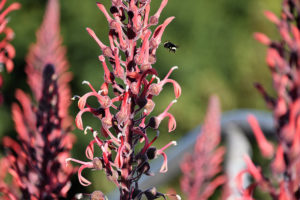
Chilean lobelia (Lobelia tupa)
SOFT: Stroke the red flower spikes of a lobelia and you won’t be able to stop – a smooth, velvety texture that caresses your fingertip.
FIND IT: As you turn left for Kids’ Zone.
SMELL
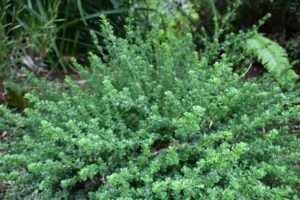
Alpine bush mint (Prostanthera cuneata)
MINTY: This little Australian alpine plant with little, lavender-bell flowers has a delicious mint-tea smell when you rub the leaves gently.
FIND IT: Between the New Zealand flax and bottlebrush, going into Kids’ Zone.
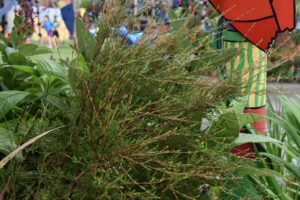
Alpine baeckea (Baeckea gunniana)
TANGY: Another alpine plant from Down Under, the alpine baeckea has long branchlets of soft leaves that have an unusual aroma when gently crushed: some call it “tea-tree,” others “cleaning-fluid.” (You can actually make a tea from the leaves, with a citrus taste.)
FIND IT: Below the entry pole at the first Kids’ Zone playground.
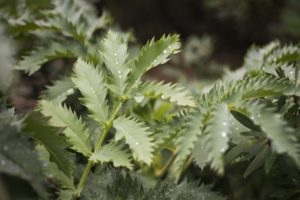
Honey bush (Melianthus major)
SWEET: It’s rare to find a plant that smells of peanut butter, but this is it! A tall shrub from South Africa, Melianthus produces long spikes of red flowers (its name means ‘large honey-flower’) and big feathery leaves that smell like peanut butter. But beware: all parts of this plant are poisonous.
FIND IT: In the Kids’ Zone borders.
TAKE THE TOUR: The sensory garden tour leaves 10am Nov. 5 from the main plaza. It’s free with admission or membership. Find all garden tours here.